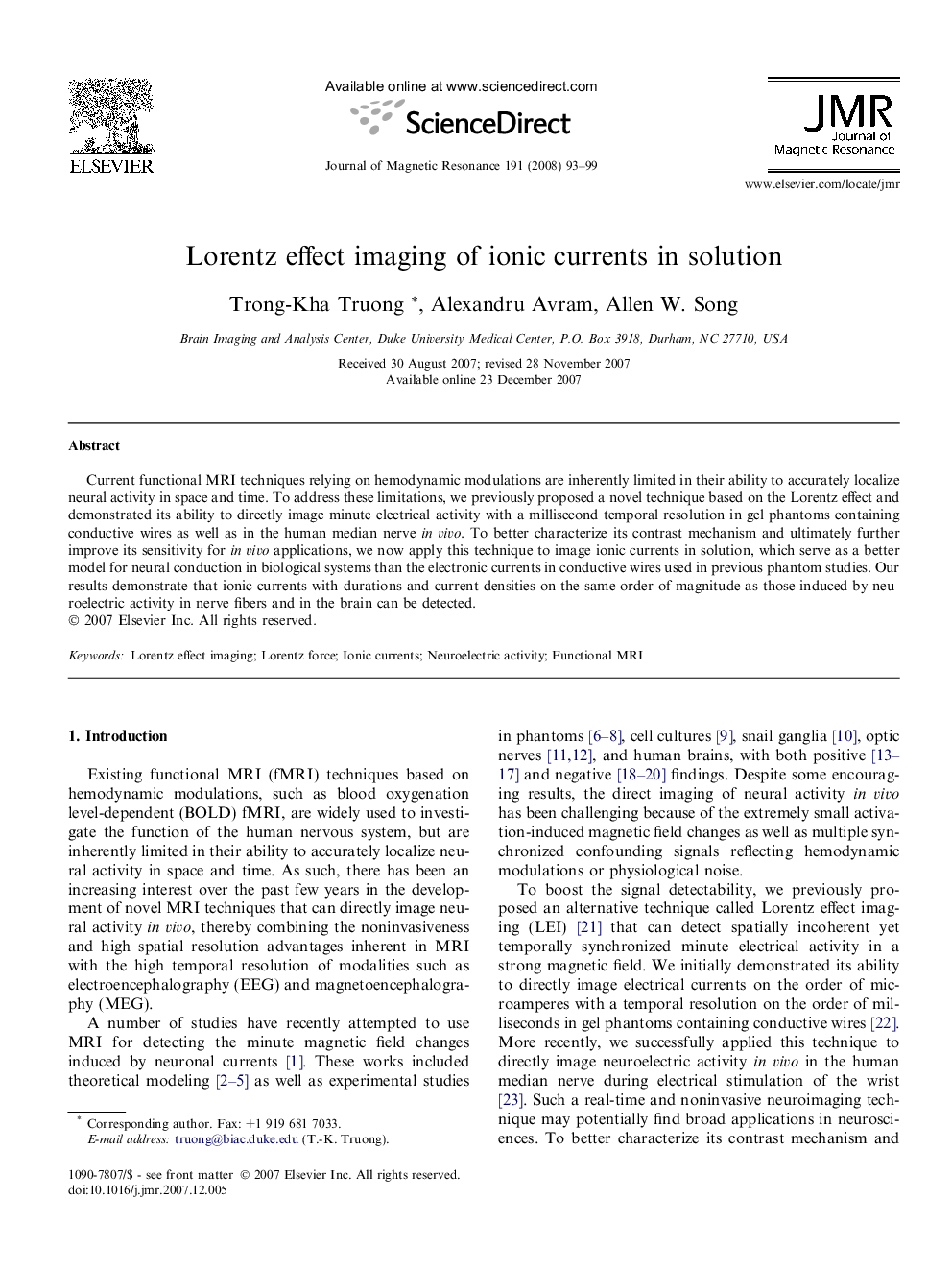| Article ID | Journal | Published Year | Pages | File Type |
|---|---|---|---|---|
| 5407003 | Journal of Magnetic Resonance | 2008 | 7 Pages |
Abstract
Current functional MRI techniques relying on hemodynamic modulations are inherently limited in their ability to accurately localize neural activity in space and time. To address these limitations, we previously proposed a novel technique based on the Lorentz effect and demonstrated its ability to directly image minute electrical activity with a millisecond temporal resolution in gel phantoms containing conductive wires as well as in the human median nerve in vivo. To better characterize its contrast mechanism and ultimately further improve its sensitivity for in vivo applications, we now apply this technique to image ionic currents in solution, which serve as a better model for neural conduction in biological systems than the electronic currents in conductive wires used in previous phantom studies. Our results demonstrate that ionic currents with durations and current densities on the same order of magnitude as those induced by neuroelectric activity in nerve fibers and in the brain can be detected.
Related Topics
Physical Sciences and Engineering
Chemistry
Physical and Theoretical Chemistry
Authors
Trong-Kha Truong, Alexandru Avram, Allen W. Song,
